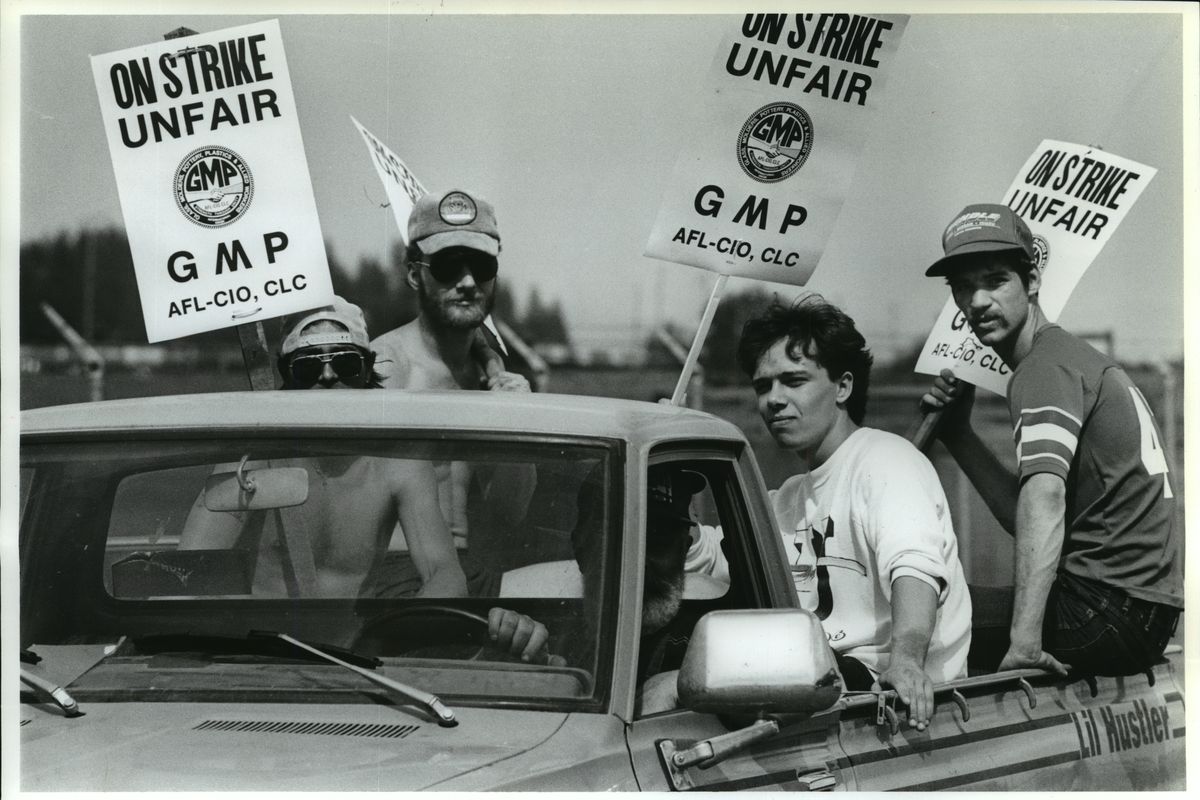We The People: Labor Day celebrates workers and the rights they’ve won

Each week, The Spokesman-Review examines one question from the Naturalization Test immigrants must pass to become United States citizens.
Today’s question: Name three national U.S. holidays.
Federal law enshrines 11 days as federal holidays, including this year’s new addition, Juneteenth. The holidays are:
• New Year’s Day, Jan. 1;
• Birthday of Martin Luther King, Jr., the third Monday in January;
• Washington’s birthday, the third Monday in February.
• Memorial Day, the last Monday in May.
• Juneteenth National Independence Day, June 19.
• Independence Day, July 4.
• Labor Day, the first Monday in September.
• Columbus Day, the second Monday in October.
• Veterans Day, Nov. 11.
• Thanksgiving Day, the fourth Thursday in November.
• Christmas Day, Dec. 25.
Let’s focus on the obvious day to consider this weekend.
Labor Day celebrates the contributions, work ethic and achievements of American workers, or “laborers,” across the country.
According to the Department of Labor, the first Labor Day holiday was observed in New York City after the Central Labor Union celebrated on Sept. 5, 1882. Local unions and 23 states across the nation acknowledged the holiday before President Grover Cleveland signed and declared Labor Day as a national and federal holiday on June 28, 1894.
Through the late 1800s, labor unions gained popularity when the Industrial Revolution was at its peak. It is suspected that 12 million immigrants came to America during that time. By the 1870s, many free African Americans also were looking for jobs since the Civil War ended.
Most Americans were working in factories, mines and mills for more than 10 hours a day and seven days a week to make a living, leaving little or no time to enjoy American culture. Immigrant and poor workers began asking for safe working conditions, a livable wage and less hours.
“Workers wanted to have the resources to fully engage in, participate, and enjoy American life that they saw the wealthy industry workers do, like theater, symphony and parks.” said Robert Donnelly, an assistant professor of history at Gonzaga University who studies labor unions and their relationship with American life.
Knights of Labor is commonly referred to as one of the oldest labor unions in America. It was founded as a labor federation to promote safe conditions while also demanding eight-hour days to allow life outside of work. Terence V. Powderly is noted as an important leader of the Knights of Labor. He joined the union in 1874 and began advocating for equal pay for equal work, the abolition of child labor and political reforms on things such as tax.
Some unions merged into another after finding common grounds in their fight for labor rights. This is how the International Brotherhood of Teamsters was founded in 1903.
Since labor unions mirror the common demands from mass groups of workers, they also reflect the American history and culture of those times.
This created issues since labor unions come together on cultural and moral grounds, making it easier for corruption and discrimination to slither into unions’ agendas. In the 1870s, the Knights of Labor and Powderly were opposed to Chinese immigrants working in the United States, a common concern for American workers. They campaigned for the U.S. Congress to pass the Chinese Exclusion Act in 1882.
“The Knights of Laborers were anti-Asian laborers and they even started riots,” Donnelly said. “It’s about the ebbs and flow of history, and the Knights of Laborers are a good study of what was going on and the typical anxieties of basic laborers they supported.”
The demand for safe working conditions in the 1880s transformed into demands for pensions by the 1920s. More labor unions were founded during national economic droughts like the Great Depression.
“Franklin Roosevelt and the Democratic Party agrees that if we’re going to get out of the great depression, we’re going to protect labor and the right to organize,” Donnelly said. “In a sense, the government negotiated with the unions on those laws.”
Roosevelt went on to establish new financial reforms and regulations in the New Deal. Sen. Rob Wagner, a New York Democrat, decided to extend the New Deal by pushing for the National Labor Relations Act of 1935.
The labor law ensured private employees maintained the rights to organize trade and labor unions and had the right to organize and take action as a collective in demonstrations such as strikes and pickets.
The act also outlawed company-led unions, allowing employees to find independent union representation outside of their company. The law is commonly known as the Wagner Act.
“It’s labor unions we can credit for the development of our middle class, and they advocated through the ’50s and ’60s for the extensions of welfare and Medicaid and just national health care reform,” Donnelly said. “Labor unions really took big steps after advocating for better conditions outside of the factories.”
American workers saw a decrease in labor union size and power in the 1970s. American businesses were leaving for other countries to duck high business taxes and pay international workers at lower rates.
According to the U.S. Bureau of Labor Statistics, more than 15 million members of the public and private sectors were represented by unions in 2020. American traditions around the holiday include cookouts and fall vacations since Labor Day always falls on the first Monday of September.